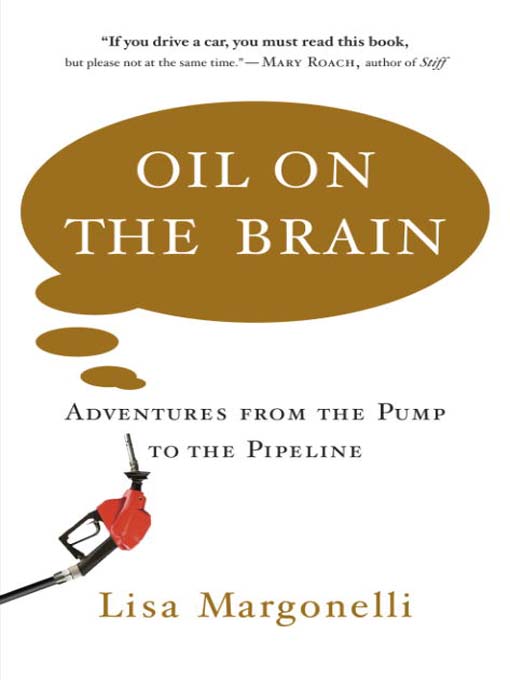
Oil on the Brain
Adventures from the Pump to the Pipeline
کتاب های مرتبط
- اطلاعات
- نقد و بررسی
- دیدگاه کاربران
نقد و بررسی

Starred review from November 20, 2006
In the last few years, just about everyone has had "oil on the brain" at some point, as record gas prices and a disastrous war have called our dependency into question. But though the U.S. burns 10,000 gallons of gasoline a second, few of us know how oil is created and drilled, how gas stations compete or what actually goes on in a refinery—let alone what happens in the mysterious Strategic Petroleum Reserve, where the U.S. government stores roughly 700 million barrels of oil in underground salt caverns on the Gulf Coast of Texas. Margonelli answers these questions and more, before examining some of the key patches in the oil industry's geopolitical quilt: source countries like Chad, where promises of real local growth fall hopelessly short, or China, which, "by 2025, perhaps, will import as much crude oil as the U.S. does now." Writing in a witty, first-person voice, Margonelli criticizes corruption in places like Nigeria, while expressing her "love of hydrocarbons" for the unlikeliness of their formation and the ingenuity required to extricate them. This is an original, open-minded look at a subject about which everyone has an opinion.

January 1, 2007
Freelance writer Margonelli spent three years and traveled 100,000 miles starting at a California gas station/convenience store, then an oil refinery, oil fields in Texas, the Strategic Petroleum Reserve, and oil fields in Venezuela, Chad, Iran, Nigeria, and China to write this book, which focuses on how crude oil from fields throughout the world becomes gasoline for our automobiles. Most of her text is made up of conversations with people in and around the oil industry, including government officials, oil rig workers, villagers in Chad, and energy researchers in China. While some statistical data on oil consumption and production are provided, this is an odd mix of travelog and breezy narrative interspersed with odd references (e.g., a Talking Heads song and descriptions of a young woman in Venezuela wearing a fishnet top with a push-up bra). Margonelli's message is that U.S. consumers continue to use more of the world's oil despite high prices, hurricanes, and warnings of global warming and that we need to find a better way to manage our energy resources. An optional purchase.Eva Lautemann, Georgia Perimeter Coll. Lib., Clarkston
Copyright 2007 Library Journal, LLC Used with permission.

November 1, 2006
Margonelli has written about the culture and economy of energy for publications such as " Wired" , " Discover" , " Salon" , and the" San Francisco Chronicle" . In the summer of 2003, she started hanging out at independent gas stations, where owners might clear pennies per gallon of gas, surviving on impulse sales of junk food and soda. Her journey takes us up the delivery chain, spending a typical day with a tanker truck driver, hanging out with suppliers, touring refineries, and seeing what life is like at an oil rig. Whether visiting "wildcatters" in Texas, the Strategic Petroleum Reserve in the Gulf of Mexico, or the oil pit at the New York Mercantile Exchange, Margonelli charms her way into the good graces of insiders to report on the vast petroleum network. Her voyage takes us to Venezuela, Chad, Nigeria, and ultimately the Persian Gulf, where she spends time at the Salmon oil fields in Iran. Filled with rich history, industry anecdotes, and politics, Margonelli's book brings a deeper appreciation of the complicated and often tenuous process that we take for granted. (Reprinted with permission of Booklist, copyright 2006, American Library Association.)

























دیدگاه کاربران